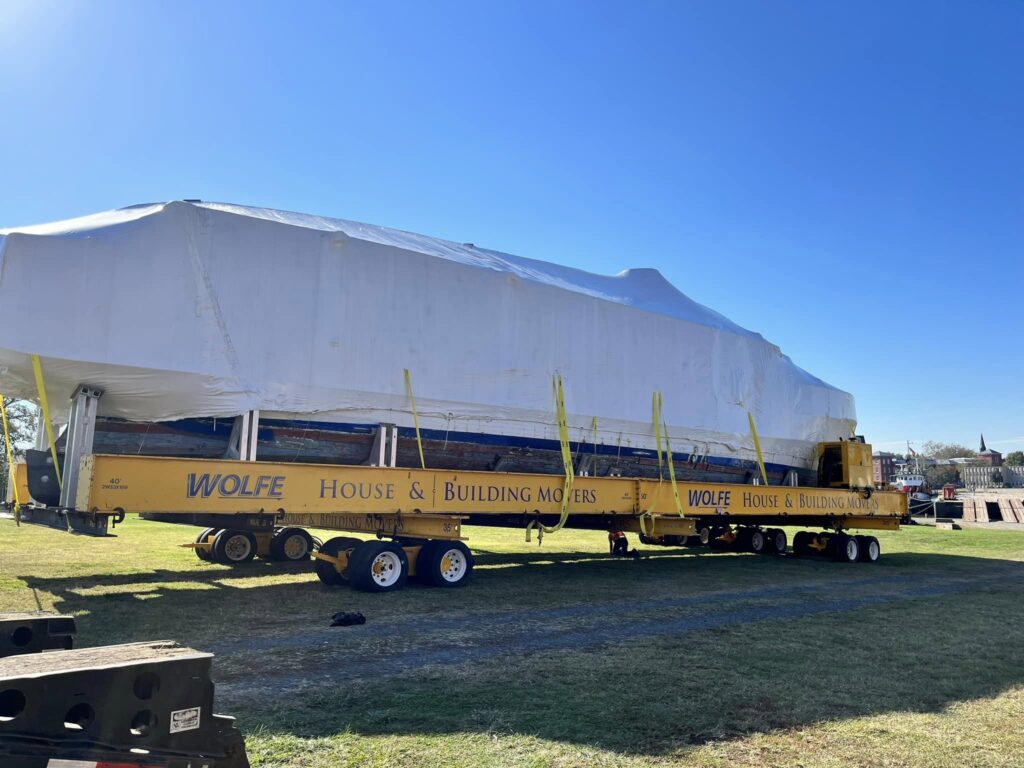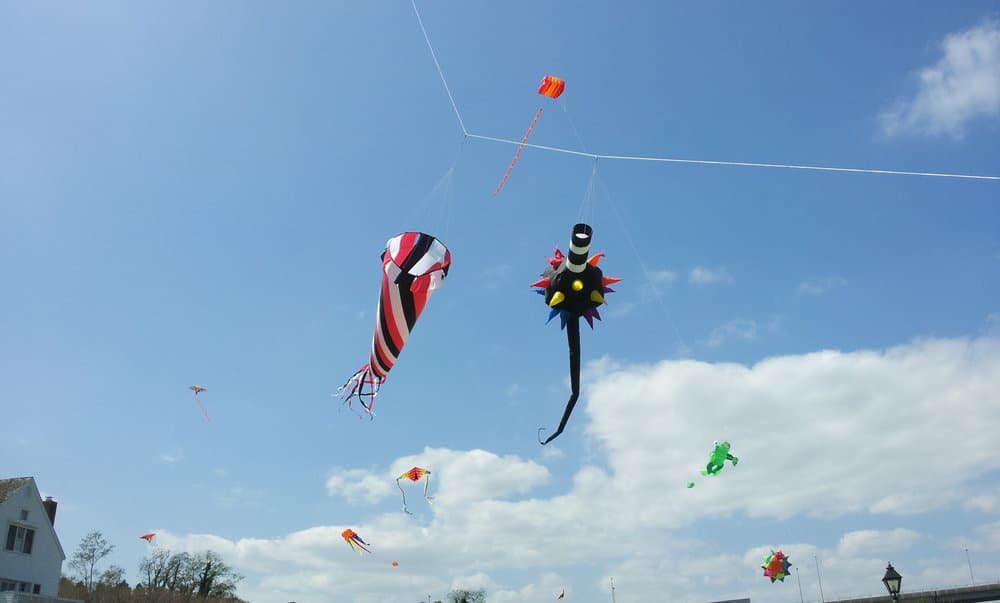An American symbol of the 20th century has come to Cambridge, Maryland to be restored and displayed.
USS Sequoia, the stunning presidential yacht used during eight U.S. presidencies, arrived to Richardson Maritime Center covered in shrink wrap near the end of October.
The 1925 Trumpy yacht Sequoia turned heads on the Bay as it headed to the Eastern Shore by barge. The 104-foot-long vessel took a five-day journey from Belfast, Maine, where it had been sitting since 2019.

Nicknamed “the floating White House”, the yacht was used by presidents beginning with Herbert Hoover and ending with Gerald Ford. According to a 1977 article, Sequoia was costing taxpayers $800,000 a year to operate. President Jimmy Carter’s administration sold it at auction in a cost-saving move.
Since 1977, the presidential yacht has passed through several private owners and some plans were thwarted by the high cost of restoration and operation.
Upon its arrival to Cambridge Creek, the 93-year-old yacht had to be carefully hauled from its barge and cradled onto a new bed of beams and blocks at Richardson Maritime Center. Detailed plans for the wooden-hulled boat are still being finalized, according to Richardson leaders. It is “slated for renovations and display.”
Maritime center leaders say its presence presents a great opportunity for Cambridge.
“We see this as a huge benefit to Richardson’s mission, and a kick start to the maritime trades in the area,” said Martin Hardy, Board Chairman of the Richardson Maritime Center.
It’s not the first time Sequoia has been in Cambridge. The yacht’s first visit came in 1935. U.S. President Franklin Delano Roosevelt arrived aboard the yacht to dedicate the original Choptank River Bridge, funded by the New Deal.
Sequoia was last seen in Cambridge in 2019 while in transit from Washington, D.C., to Maine, where renovation work was originally planned to take place. The boat languished because of space constraints and the COVID-19 pandemic. Its owner, Michael Cantor, decided to move operations back to the Richardson’s site in Maryland.
The site is also home to Ruark Boatworks, a workshop open to the public for wooden boatbuilding, and the Richardson Maritime Museum, a living history museum.
Richardson is considering adding a building to house the restoration of the presidential yacht, which is predicted to take up to five years and 20 shipwrights. The city of Cambridge hopes that Sequoia‘s restoration will give a boost to the Cambridge Harbor project, the ongoing redevelopment of the city’s waterfront.
Cantor’s ultimate goal once Sequoia has been restored is to “promote the understanding of presidential history and marine conservation, as well as for an exhibit.”
Cantor plans to return the boat Washington, D.C., but believes Sequoia could keep ties with Cambridge beyond the restoration.
“Its permanent home will be on the water,” Cantor said, “but Cambridge could be its home for repairs and refitting.”
Chesapeake Bay Magazine will follow the developments at the Richardson site in the months to come.
-Meg Walburn Viviano




